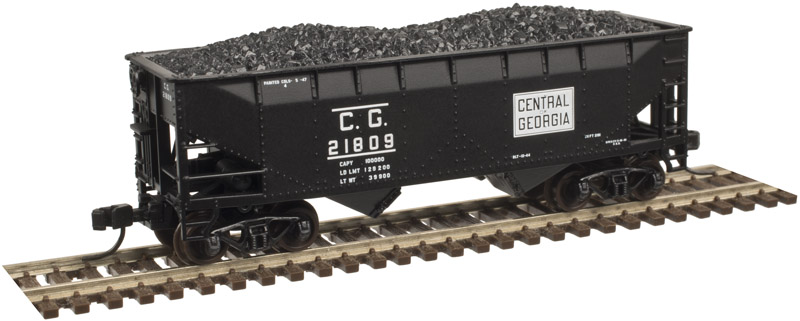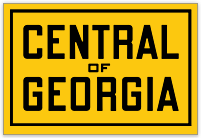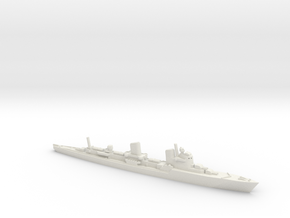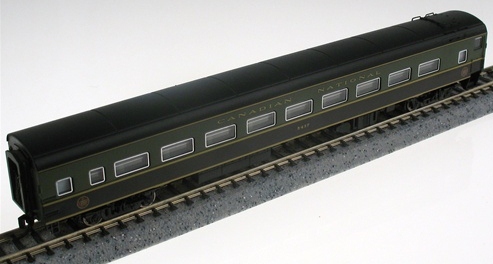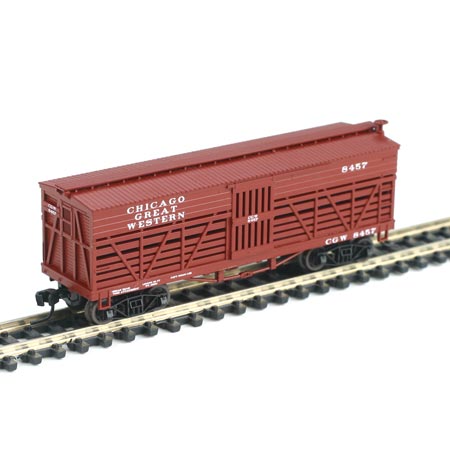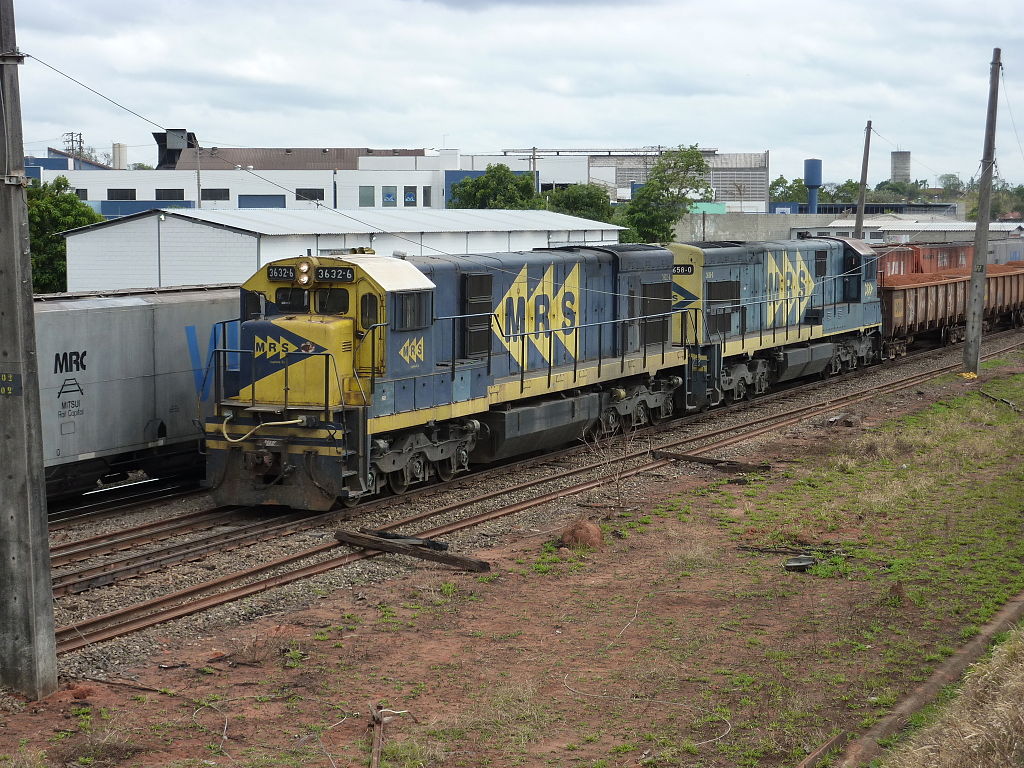Model Information: This model was introduced in December of 2007 with a first deliver in May of 2008. Atlas' version of the 2-Bay Offset Side Hopper with Flat Ends is modeled after the open hoppers that were built in the 1930s and the 1940s to transport coal.
Prototype History: The late 1920s saw the introduction of the AAR standard “offset-side” 50- and 70-ton hoppers. The design went through several variations in the late 1920s and early 1930s before settling on two versions of the 50-ton car and one 3-bay, 70-ton car in 1935. Most roads went for the AAR standard designs, but the N&W, VGN, and Pennsy were notable holdouts. World War II brought the famous “war emergency” hoppers (only the N&W and MP bought the 70-ton version) and several composite versions of existing designs. After the war, AC&F found some brief success with a welded outside-stake hopper design, but the weld joints broke under the stress of loading and unloading rather than flexing like riveted joints. The offset-side design also had problems: the inside stakes were more prone to corrosion, and they suffered worse from loading and unloading stress than outside-staked hoppers. The design waned in the 1950s and was all but abandoned for new cars by 1960. Some roads (notably the C&O, the B&O, and the L&N) made the best of a bad situation by rebuilding their offset-side cars with all new outside-staked sides in the late 1950s and early 1960s.
Road Name History: The Central of Georgia Railway (reporting mark CG) started as the Central Rail Road and Canal Company in 1833. As a way to better attract investment capital, the railroad changed its name to Central Rail Road and Banking Company of Georgia. This railroad was constructed to join the Macon and Western Railroad at Macon, Georgia, and run to Savannah. This created a rail link from Chattanooga, on the Tennessee River, to seaports on the Atlantic Ocean. It took from 1837 to 1843 to build the railroad from Savannah to the eastern bank of the Ocmulgee River at Macon; a bridge into the city was not built until 1851.
During the Savannah Campaign of the American Civil War, conducted during November and December 1864, Federal troops tore up the rails and converted them into "Sherman's neckties."
At the end of 1956 the CofG operated 1,764 miles (2,839 km) of road and 2,646 miles (4,258 km) of track; that year it reported 3208 million net ton-miles of revenue freight and 73 million passenger-miles. Those totals do not include the 144-mile (232 km) S&A, the 10-mile (16 km) L&W, the 20-mile (32 km) WS or the 36-mile (58 km) W&T. The Central became a Southern Railway subsidiary on June 17, 1963. In 1971 the Southern formed the Central of Georgia Railroad to merge the Central of Georgia Railway, the Savannah and Atlanta Railway, and the Wrightsville and Tennille Railroad.
Today the Central of Georgia exists only as a paper railroad within the Norfolk Southern Railway group. 42 miles (68 km) of the CofG's former mainline are currently leased by the Chattooga and Chickamauga Railway from the State of Georgia.
During the Savannah Campaign of the American Civil War, conducted during November and December 1864, Federal troops tore up the rails and converted them into "Sherman's neckties."
At the end of 1956 the CofG operated 1,764 miles (2,839 km) of road and 2,646 miles (4,258 km) of track; that year it reported 3208 million net ton-miles of revenue freight and 73 million passenger-miles. Those totals do not include the 144-mile (232 km) S&A, the 10-mile (16 km) L&W, the 20-mile (32 km) WS or the 36-mile (58 km) W&T. The Central became a Southern Railway subsidiary on June 17, 1963. In 1971 the Southern formed the Central of Georgia Railroad to merge the Central of Georgia Railway, the Savannah and Atlanta Railway, and the Wrightsville and Tennille Railroad.
Today the Central of Georgia exists only as a paper railroad within the Norfolk Southern Railway group. 42 miles (68 km) of the CofG's former mainline are currently leased by the Chattooga and Chickamauga Railway from the State of Georgia.
Brand/Importer Information: In 1924 Stephan Schaffan, Sr. founded the Atlas Tool Company in Newark, New Jersey. In 1933 his son, Stephan Schaffan, Jr., came to work for his father at the age of sixteen. Steve Jr. built model airplanes as a hobby and frequented a local hobby shop. Being an enterprising young man, he would often ask the owner if there was anything he could do to earn some extra spending money. Tired of listening to his requests, the hobby-store owner threw some model railroad track parts his way and said, "Here, see if you can improve on this".
In those days, railroad modelers had to assemble and build everything from scratch. Steve Jr. created a "switch kit" which sold so well, that the entire family worked on them in the basement at night, while doing business as usual in the machine shop during the day.
Subsequently, Steve Jr. engineered the stapling of rail to fiber track, along with inventing the first practical rail joiner and pre-assembled turnouts and flexible track. All of these products, and more, helped to popularize model railroading and assisted in the creation of a mass-market hobby. The budding entrepreneur quickly outgrew the limitations of a basement and small garage operation. Realizing they could actually make a living selling track and related products, Steve and his father had the first factory built in Hillside, New Jersey at 413 Florence Avenue in 1947. On September 30, 1949, the Atlas Tool Company was officially incorporated as a New Jersey company.
In 1985, Steve was honored posthumously for his inventions by the Model Railroad Industry Association and was inducted into the Model Railroad Industry Hall of Fame in Baltimore, Maryland. In addition, Steve was nominated and entered into the National Model Railroad Association Pioneers of Model Railroading in 1995.
In the early 1990s, the Atlas Tool Company changed its name to Atlas Model Railroad Company, Inc.
In those days, railroad modelers had to assemble and build everything from scratch. Steve Jr. created a "switch kit" which sold so well, that the entire family worked on them in the basement at night, while doing business as usual in the machine shop during the day.
Subsequently, Steve Jr. engineered the stapling of rail to fiber track, along with inventing the first practical rail joiner and pre-assembled turnouts and flexible track. All of these products, and more, helped to popularize model railroading and assisted in the creation of a mass-market hobby. The budding entrepreneur quickly outgrew the limitations of a basement and small garage operation. Realizing they could actually make a living selling track and related products, Steve and his father had the first factory built in Hillside, New Jersey at 413 Florence Avenue in 1947. On September 30, 1949, the Atlas Tool Company was officially incorporated as a New Jersey company.
In 1985, Steve was honored posthumously for his inventions by the Model Railroad Industry Association and was inducted into the Model Railroad Industry Hall of Fame in Baltimore, Maryland. In addition, Steve was nominated and entered into the National Model Railroad Association Pioneers of Model Railroading in 1995.
In the early 1990s, the Atlas Tool Company changed its name to Atlas Model Railroad Company, Inc.
Item created by: gdm on 2017-07-01 14:22:32. Last edited by Alain LM on 2021-06-21 12:01:36
If you see errors or missing data in this entry, please feel free to log in and edit it. Anyone with a Gmail account can log in instantly.
If you see errors or missing data in this entry, please feel free to log in and edit it. Anyone with a Gmail account can log in instantly.


